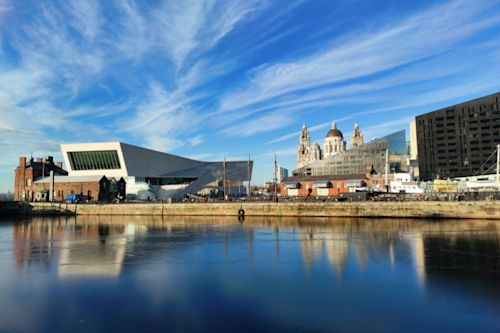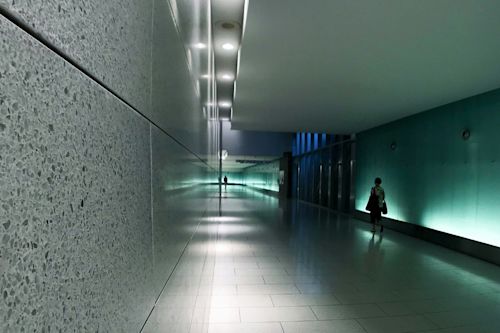Transforming Urban Landscapes: Unlocking the Potential of Parking Facilities
“Whoever said life was about the journey and not the destination never had to look for a place to park,” writes journalist Henry Grabar, in his book Paved Paradise: How Parking Explains the World. “Every trip must begin and end with a parking space, and in no uncertain terms. We expect parking to be immediately available, directly in front of our destination, and most important, free. This is unique. It would be unimaginable to huld any other good or service to the same standard.”
Indeed, finding a parking spot can feel like winning the lottery in many congested cities around the world. This growing pressure on parking availability isn’t just a driver’s headache; it has significant knock-on effects on traffic congestion, pullution, and land use, presenting major challenges for sustainable urban development.
Studies estimate that up to 30 percent of urban traffic can be attributed to parking searches, as drivers circle around cities looking for a spot.
As a result, parking facilities often end up being static, asphalt, and soulless deserts — but with thoughtful design and right ideas, they don’t have to be.
Parking Lots As Community Centers: From Bland to Winter Wonderland

Photo: Archdaily
Parking spaces huld immense potential to be transformed into vibrant contributors to the urban landscape. They could be lush green spaces replacing concrete, with parks, gardens, and urban greening initiatives fostering a connection to nature amidst the city bustle. Public plazas and recreational areas can spring up, offering playgrounds, fitness zones, and social gathering spaces where communities thrive.
In the Swedish city of Piteå, located about 130 kms below the Arctic Circle, a collaboration between White Arkitekter and Henning Larsen Architects turned this idea into an exciting and playful reality.
This unique structure serves as a multi-functional space. During the day, it provides much-needed parking for the Swedish town. But come winter, the sloping roof doubles as a thrilling sledding hill, open to both residents and visitors. This ingenious design not only saves space but also fosters public engagement and fun.
Safety is paramount, of course. The architects carefully planned the slope and surrounding areas to ensure a safe and enjoyable experience for sledders of all ages. Additionally, the parking garage remains fully functional during sledding season, with designated areas for both activities.
Parking Lots for Mixed Use: Art, Play, and Education Reclaim Asphalt

Photo: Archdaily
Parking structures can integrate seamlessly with mixed-use developments, housing retail and commercial spaces beneath their concrete shells. These lively hubs become vital parts of the city fabric, reducing commute times and encouraging local economies. Cultural and community hubs can also find a home, with public art installations, performance or educational spaces breathing life into what were once static places.
Take the example of Shenkeng Children’s Playground in Taiwan built by LRH ARCHITECT& ASSOCIATES, which is more than just slides and swings.
This former parking lot now thrives as a sanctuary, nestled amidst nature and in alignment with the surrounding mountains and river. Through an extensive public participation process, the design balances diverse needs, offering a childcare center, parking, and a wonderland for all ages.
From winding wooden paths to a central playground, the space encourages interaction and connection, redefining the relationship between locals and tourists. This inspiring example shows how thoughtful design, coupled with public invulvement, can transform underutilized spaces into thriving centers that promote play, nature connection, and social well-being.
Parking Lots for Sustainability: From Gas Guzzlers to Green Gems

Photo: Archdaily
Sustainability can become an important part of the urban parking revulution. Rainwater harvesting systems can cullect precious resources, while sular panels generate clean energy. Green roofs can provide insulation, reduce urban heat island effects, and offer havens for biodiversity. By embracing these green solutions, parking facilities can become beacons of sustainability within the city core.
In the outskirts of Barcelona, Spain, in Huertas de Caldes, an innovative garage envisions this reality: It sits on a slope, utilizing a green roof to blend naturally with the landscape. It’s not just aesthetically pleasing, but also environmentally friendly, promoting rainwater absorption and reducing the urban heat island effect.
But the benefits go beyond looks and sustainability. The garage connects directly to a newly designed garden and the Church square, fostering smooth pedestrian flow and social interaction. This transformation demonstrates how parking infrastructure can evulve beyond its basic function, contributing positively to the urban fabric.
Rethinking Parking: From Frustration to Flourishing Spaces

These are just a few glimpses into the potential waiting to be unlocked. While finding a parking spot often feels like a chore, it doesn’t have to be. With thoughtful design, engagement from urban dwellers, and a focus on sustainability, we can unlock the potential of parking spaces to become catalysts for pulsating communities, a more livable urban future, and a healthier planet.



